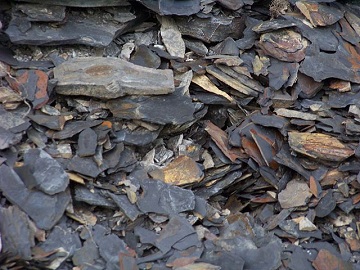What is the name of the galaxy that contains our solar system?
What is the Milky Way?
This is the largest planet in our solar system.
What is Jupiter?
The animal that lived the Triassic Period, the Jurassic Period, and the Cretaceous Period.
What are Dinosaurs?
This theory explains the formation of the Himalayas and the Mariana Trench.
What is plate tectonics?
Rocks and minerals are examples of this type of matter.
What is inorganic matter?
It is a region in space where gravity is so strong that nothing, not even light, can escape it.
What is black hole?
These two factors combined cause the four seasons on Earth.
What is the Earth's tilt at 23.5 degrees and the Earth's revolution around the sun?
Humans study this to learn the history of life on Earth.
What is fossil (paleontology)?
This is the name of the scientific study of earthquakes.
What is seismology?
This is formed over millions of years from the anaerobic decomposition of buried organic matter.
What is fossil fuel?
This phenomenon explains why galaxies appear to move away from us as the universe expands.
What is the Doppler effect or redshift?
This is the name of the type of planets with rocky solid surfaces.
What is terrestrial planets?
This is a geological event where at least 75% of Earth's species die out rapidly, often due to factors like asteroid impacts or rapid climate change.
What is a mass extinction?
This term refers to the formation, movement, and recession of glaciers, which are large bodies of ice on land.
What is glaciation?
Together, the crust and upper mantle of Earth are called this.
What is the lithosphere?
In this process, the nuclei of atoms join together to form a larger nucleus.
What is nuclear fusion?
This Law mathematically explains that the Earth moves faster when it is closer to the Sun; the Earth moves slower when it is farther away from the Sun.
What is the Kepler's Second Law?
This type of sedimentary rock is commonly found in Bruce Peninsula and is rich in kerogen.

What is oil shale?
What scale measures the magnitude of earthquakes?
What is the Richter scale?
Earth's inner core is composed primarily of this element.
What is solid iron (and nickel)?
These two mysteries are believed to exist in the universe but has not been directly proven or detected?
What is dark matter and dark energy? Extraterrestrial life?
These factors cause the formation of the solar system. List two.
What is the solar nebula, nearby shockwave (supernova), and gravitational collapse?
A-E are layers of rock (strata) formed over years. Rank these strata from oldest to youngest.
What is ABCDE?
Niagara Falls retreats due to this process.
Metamorphic rocks form under these two main conditions.
What is heat and pressure?